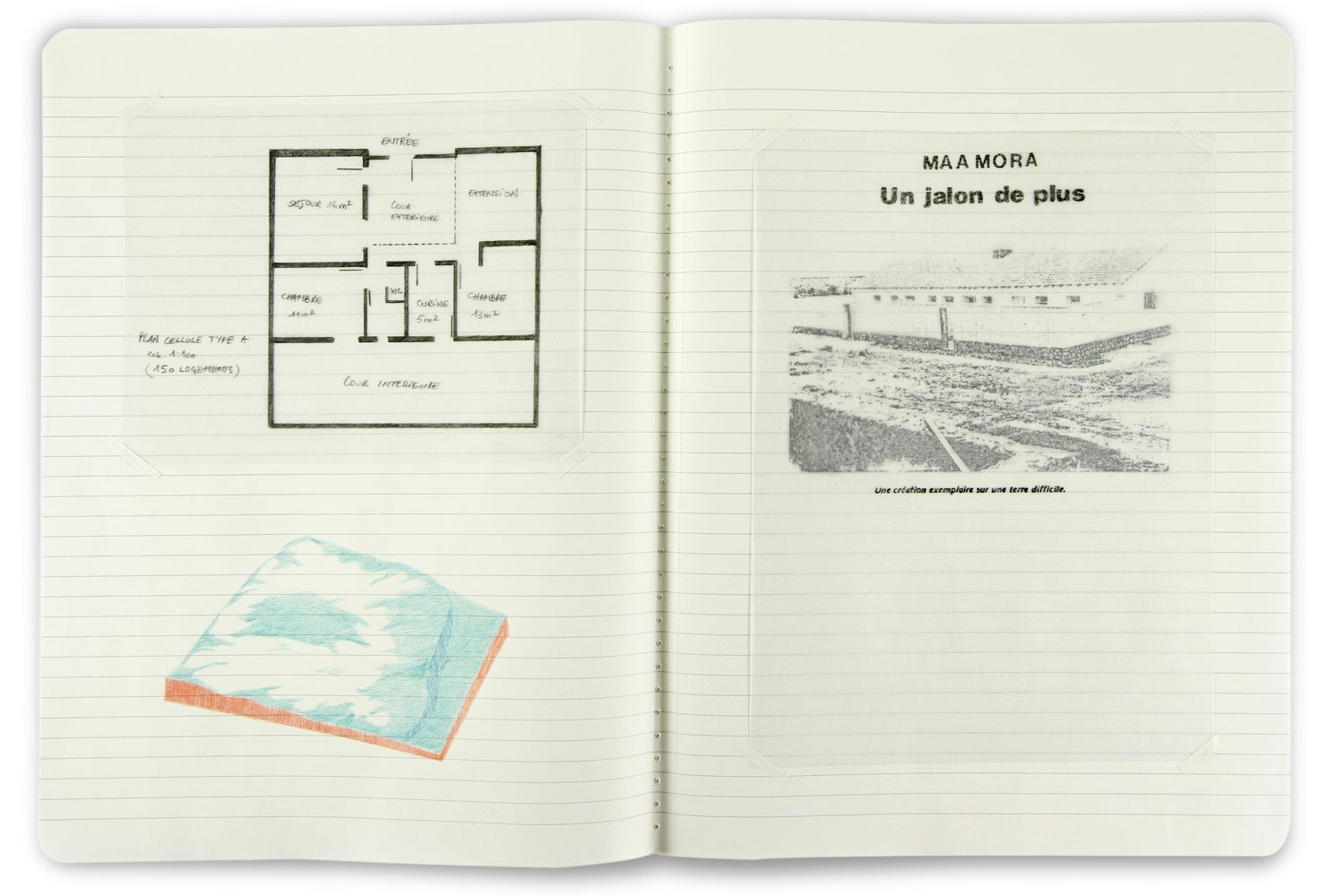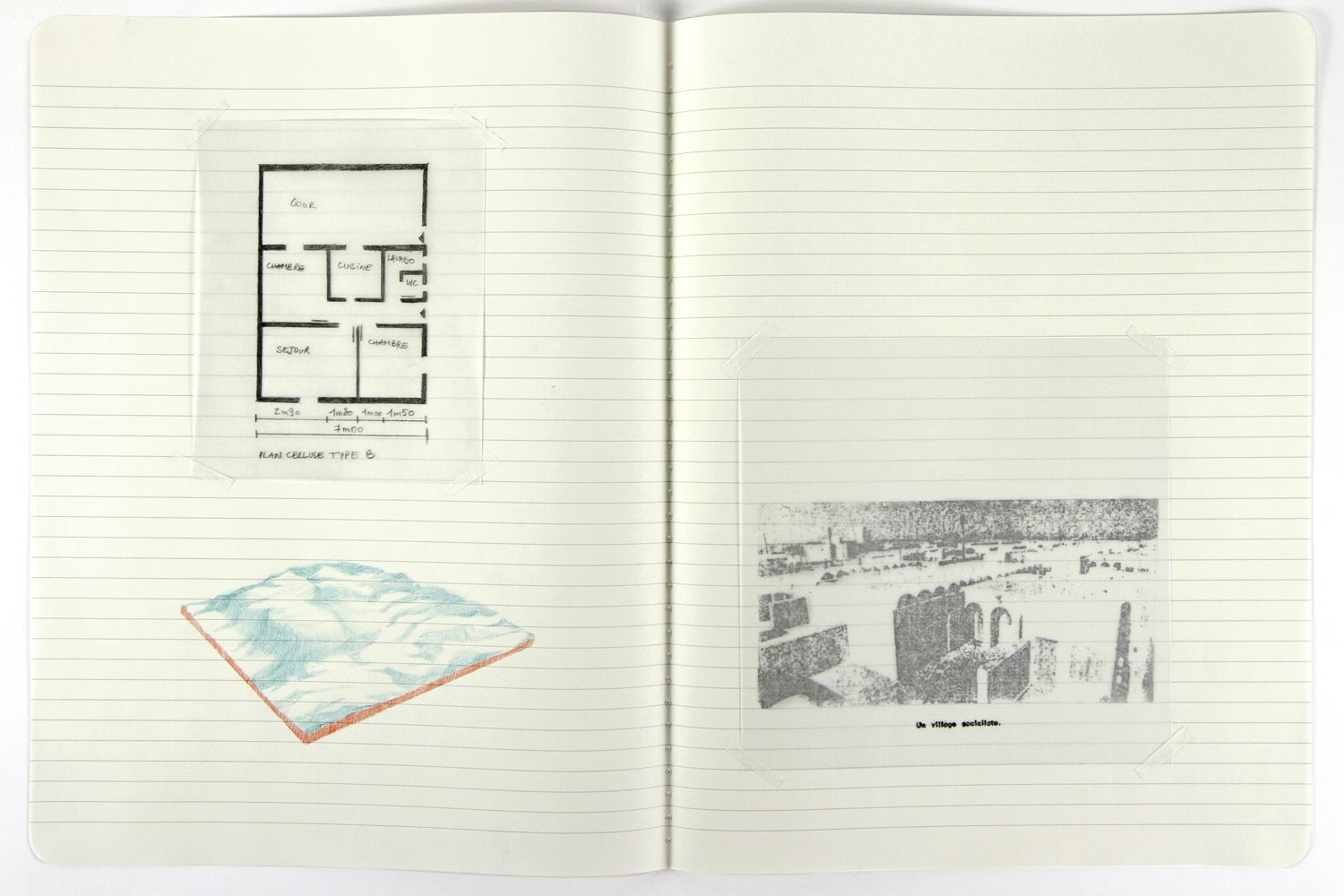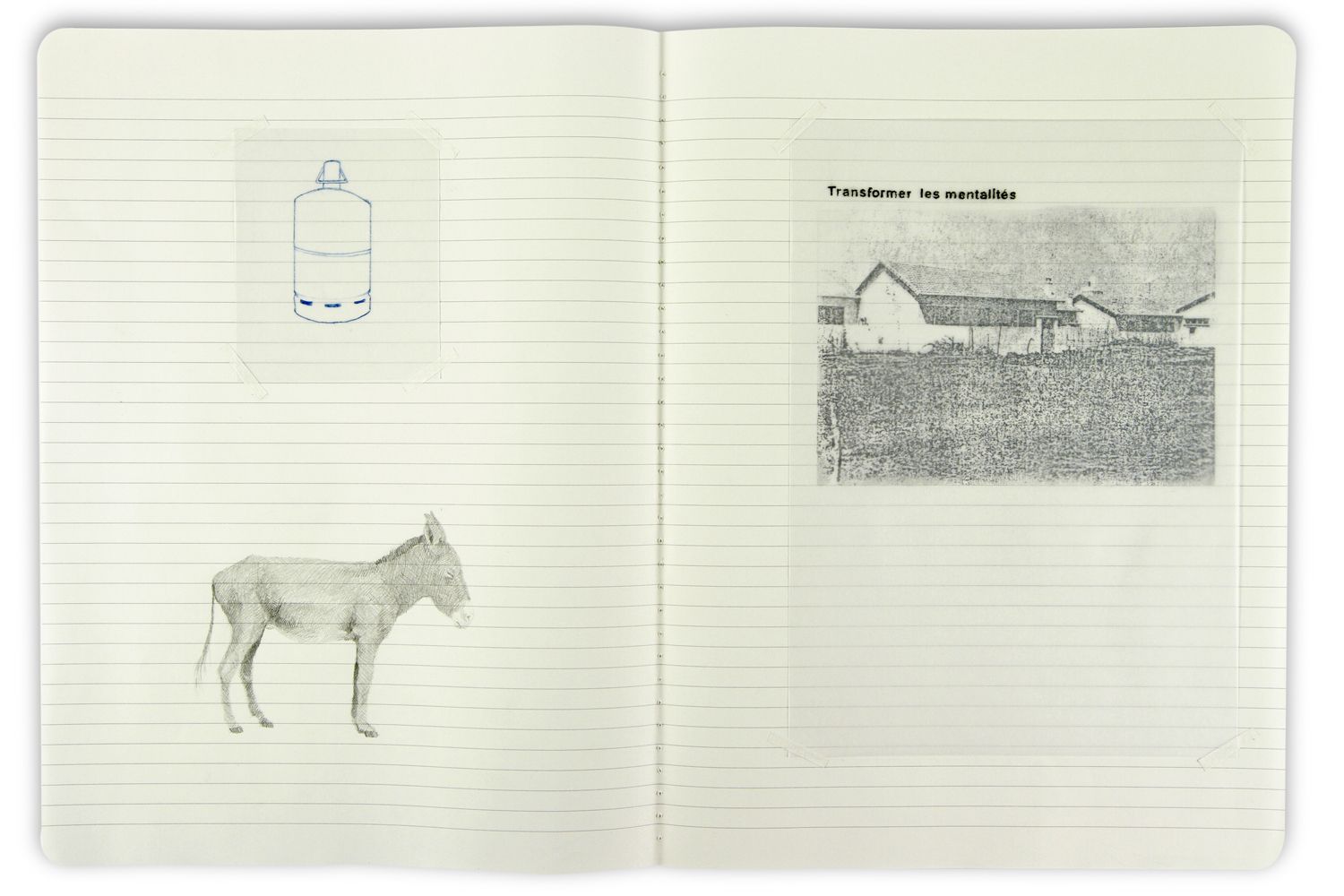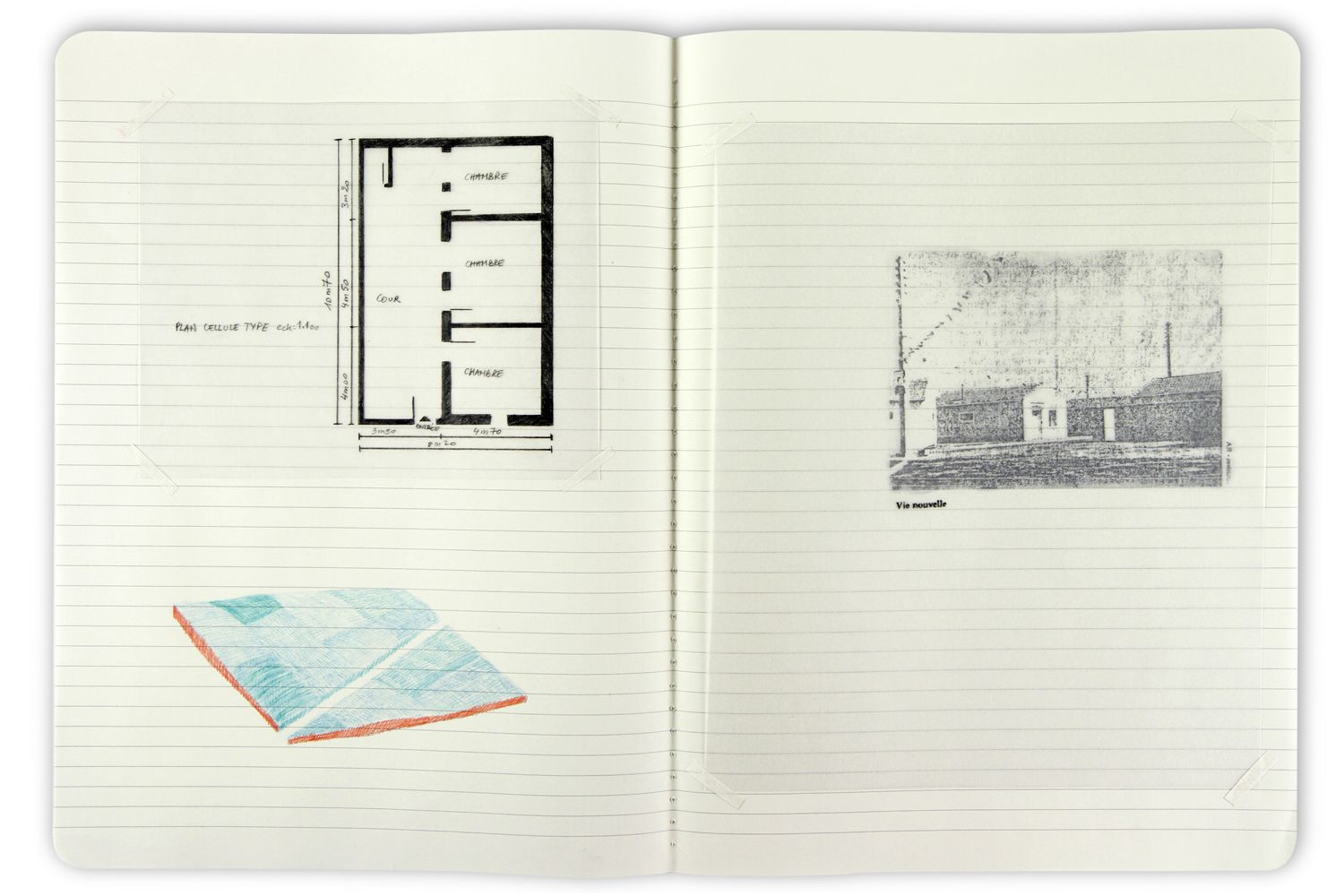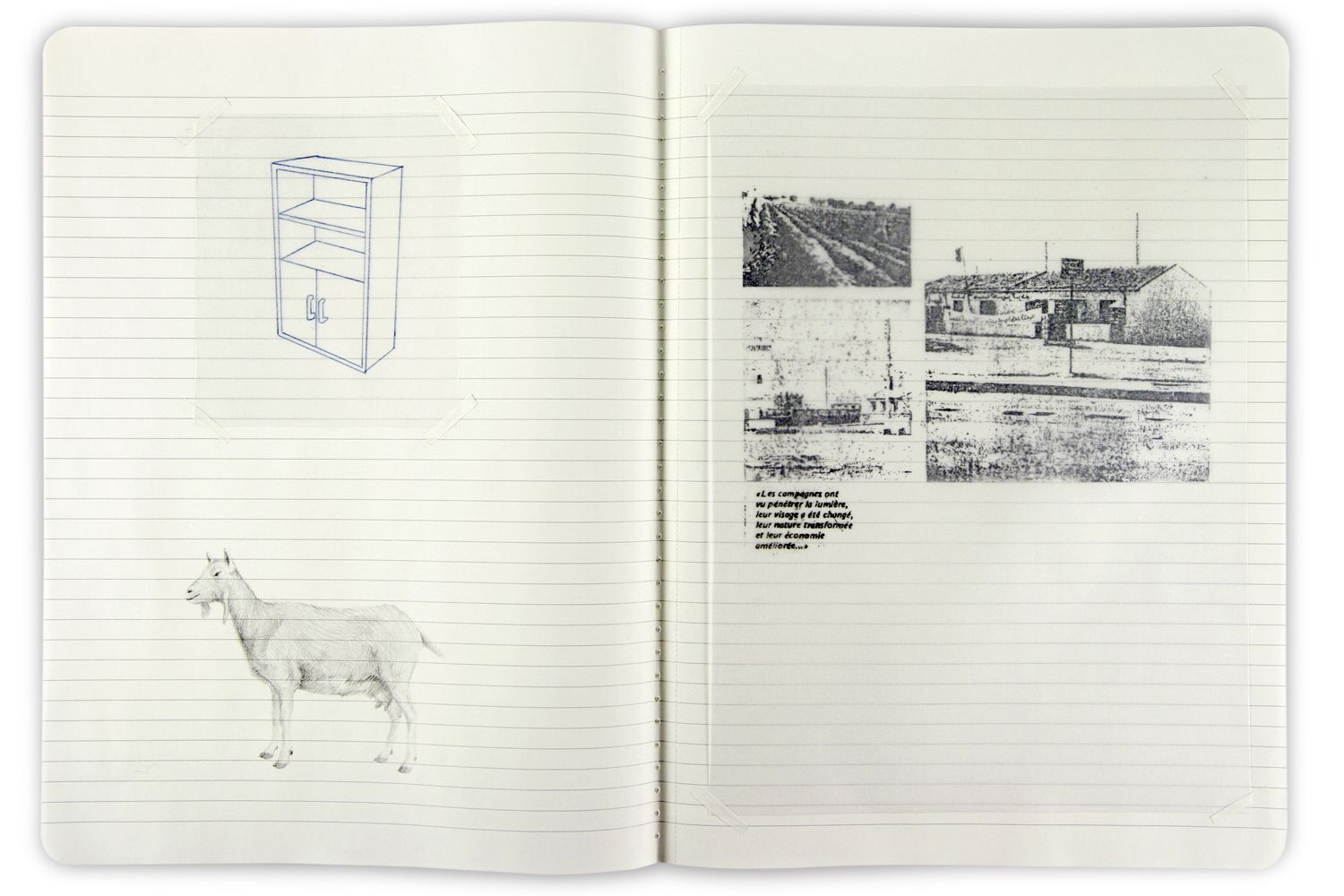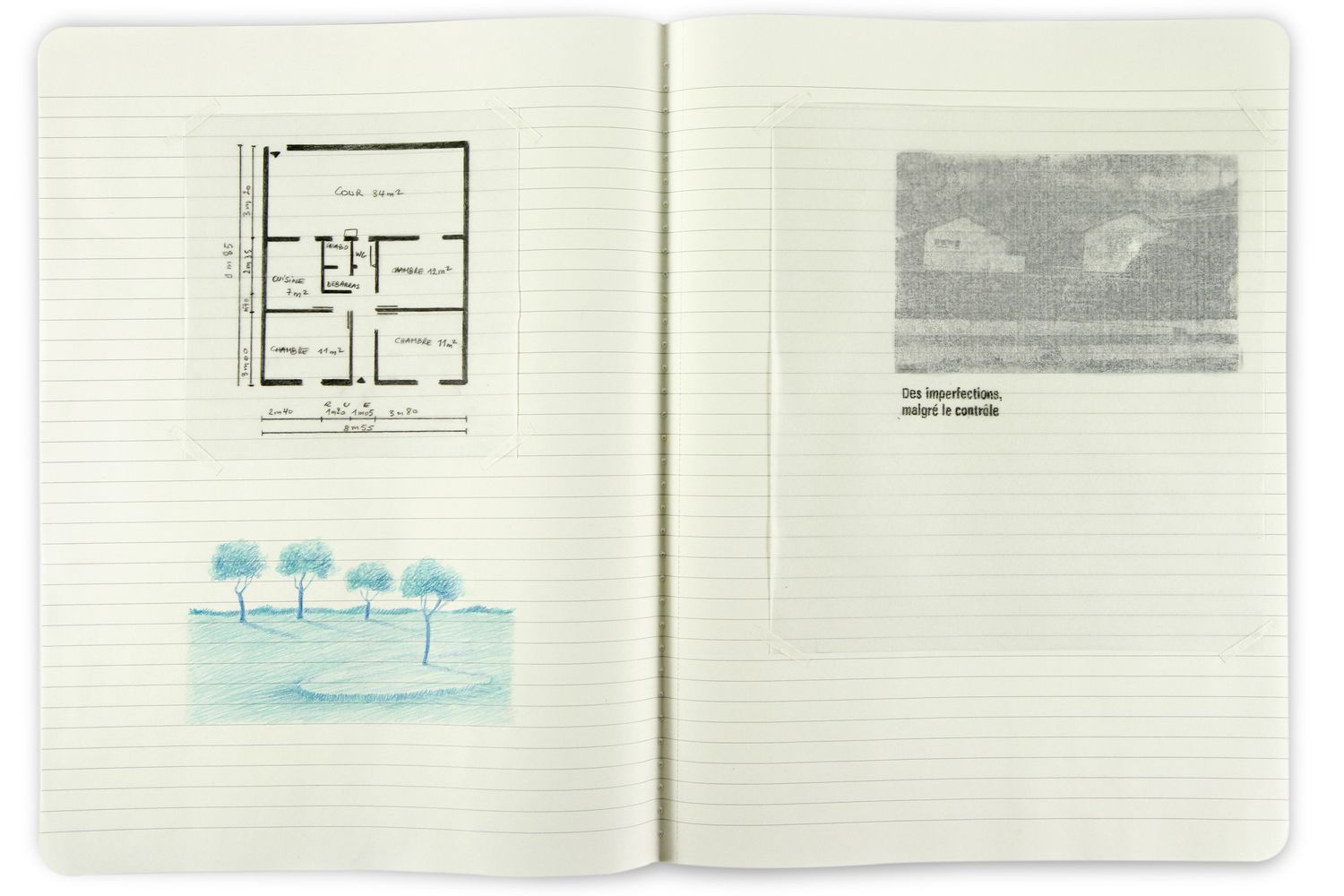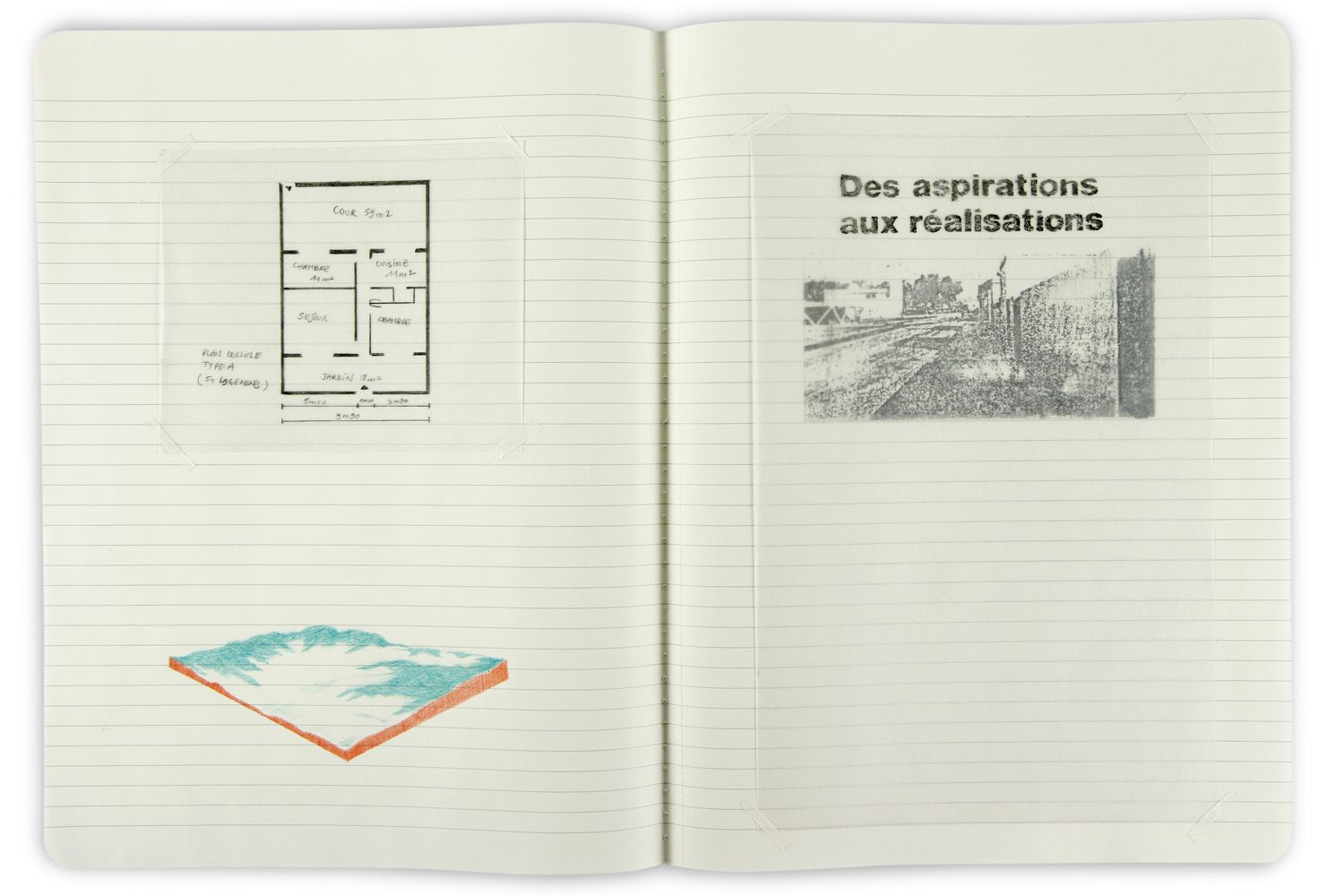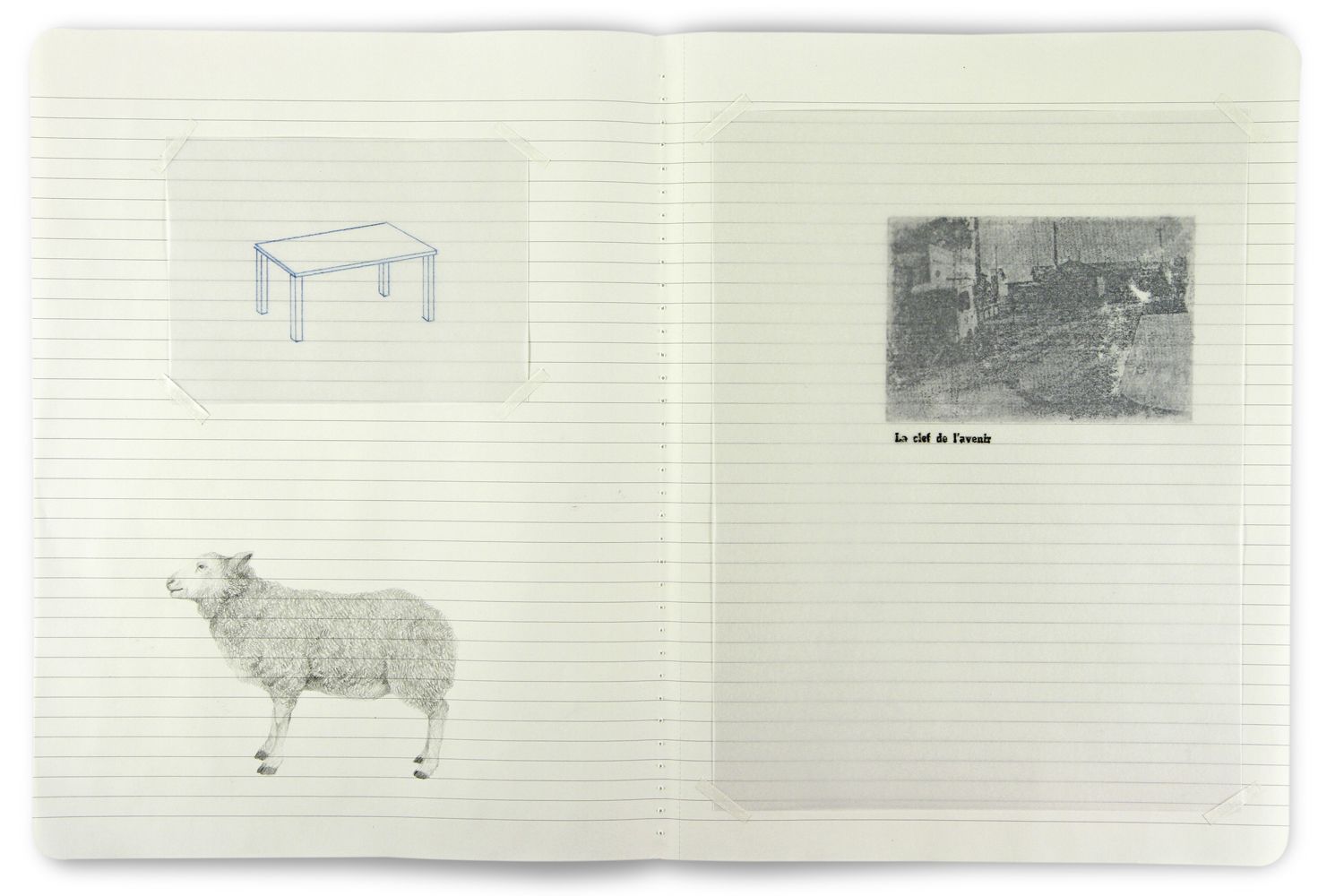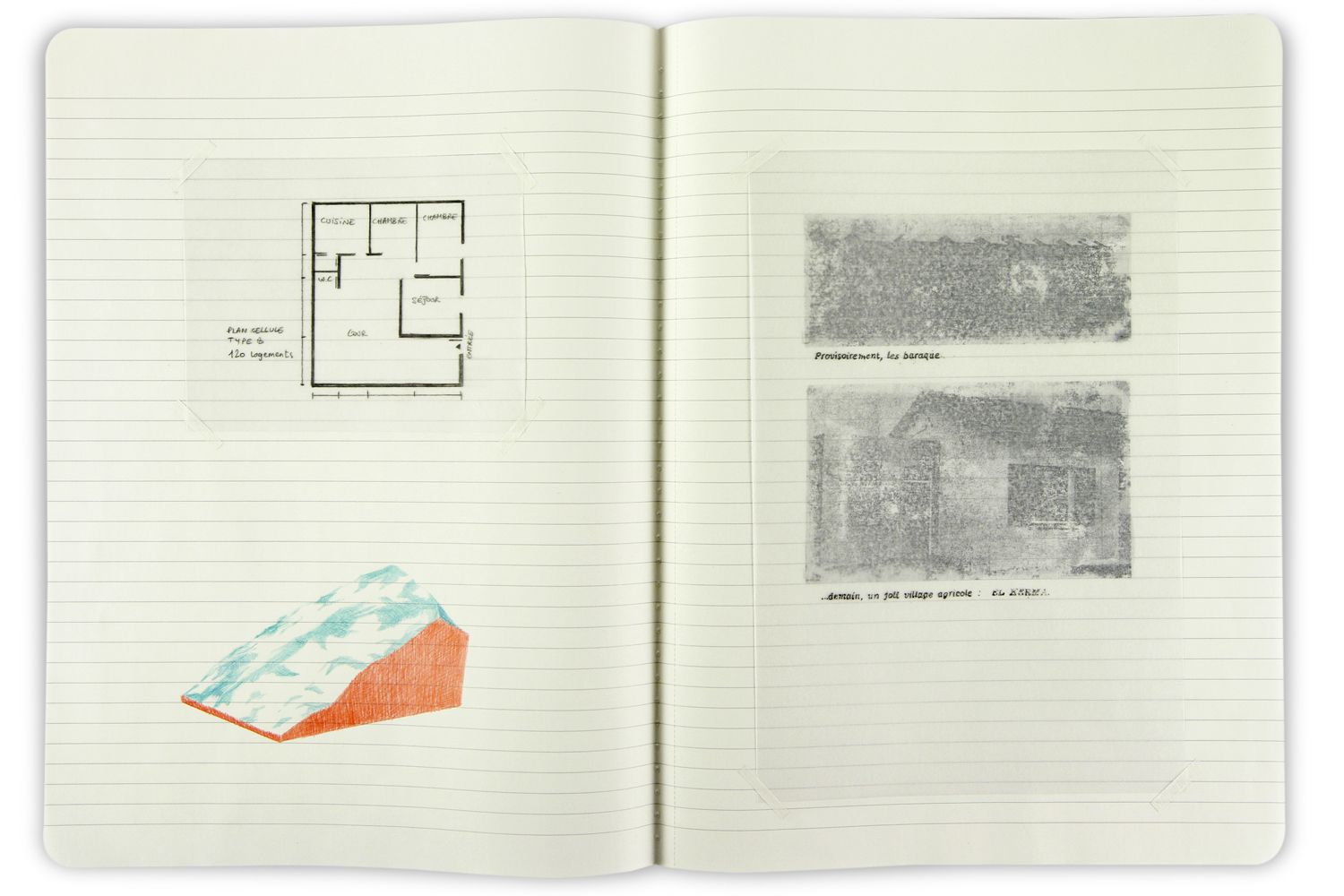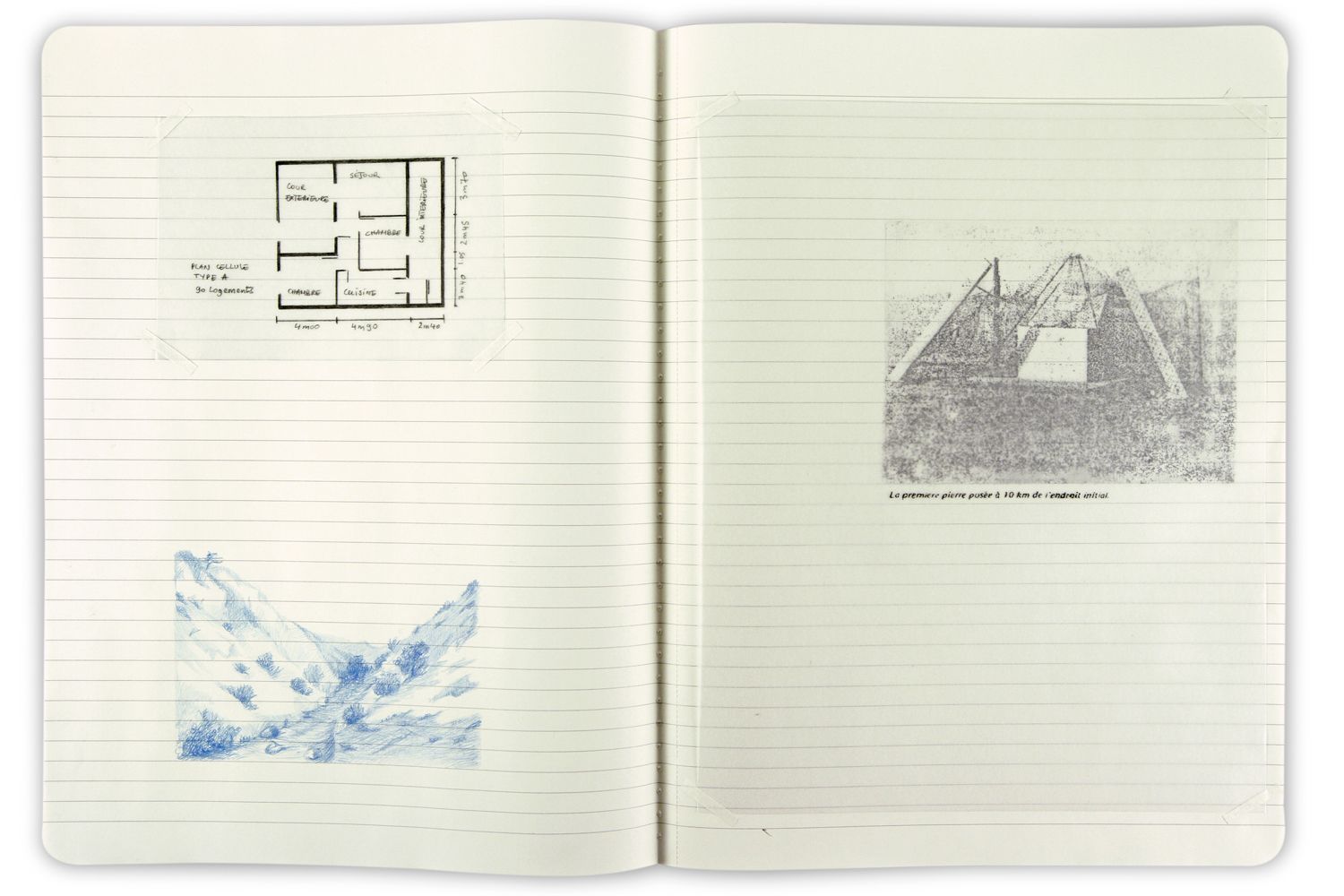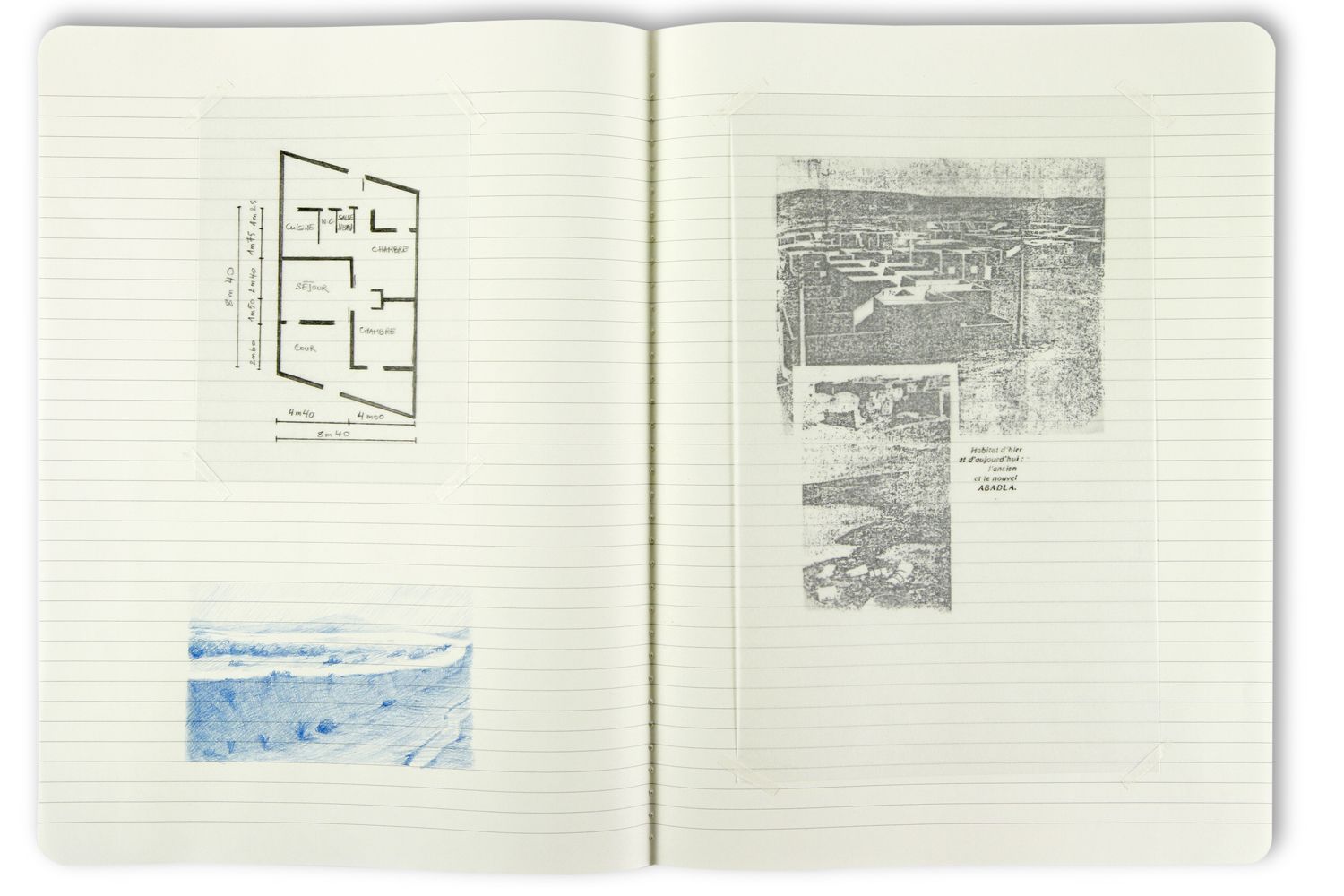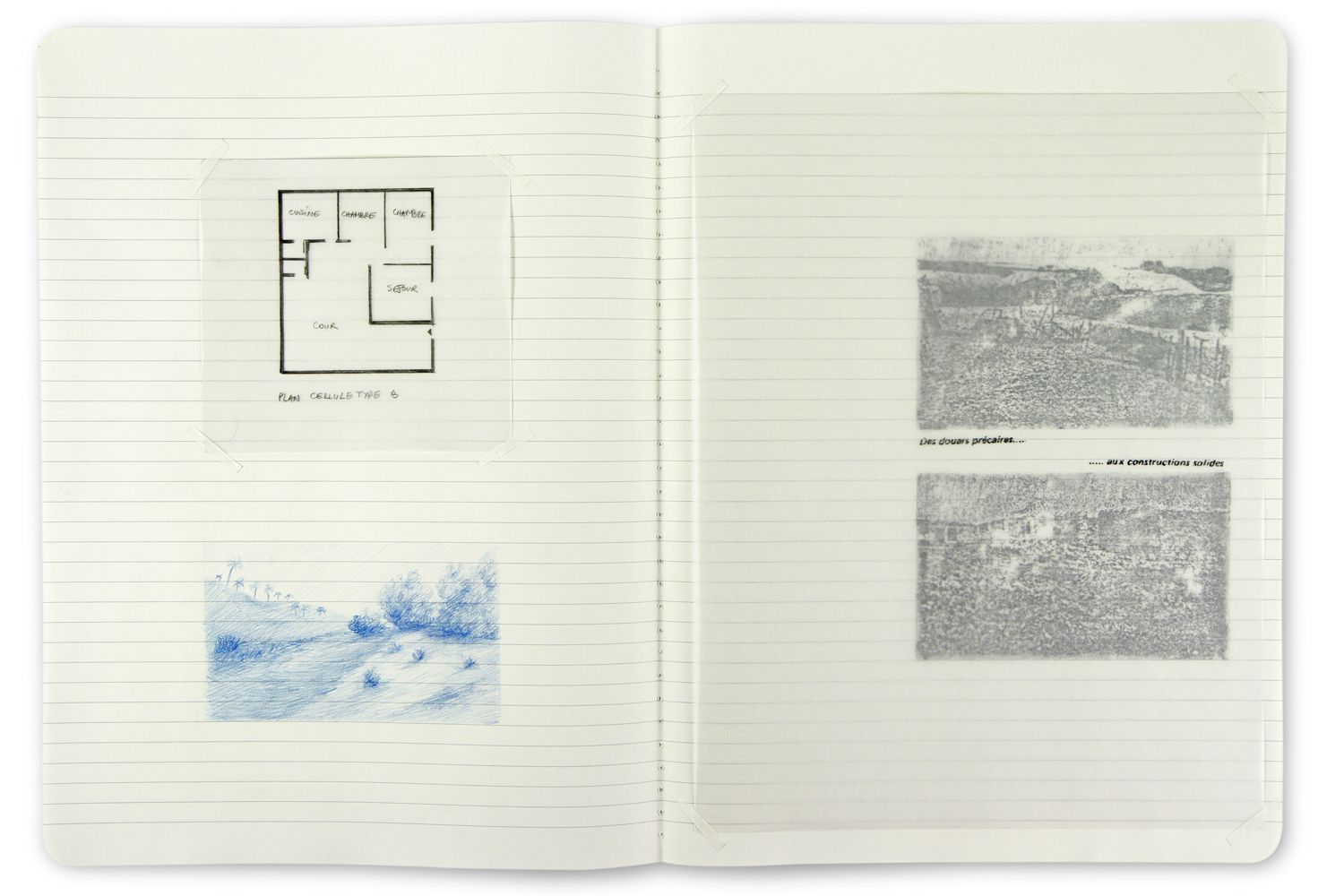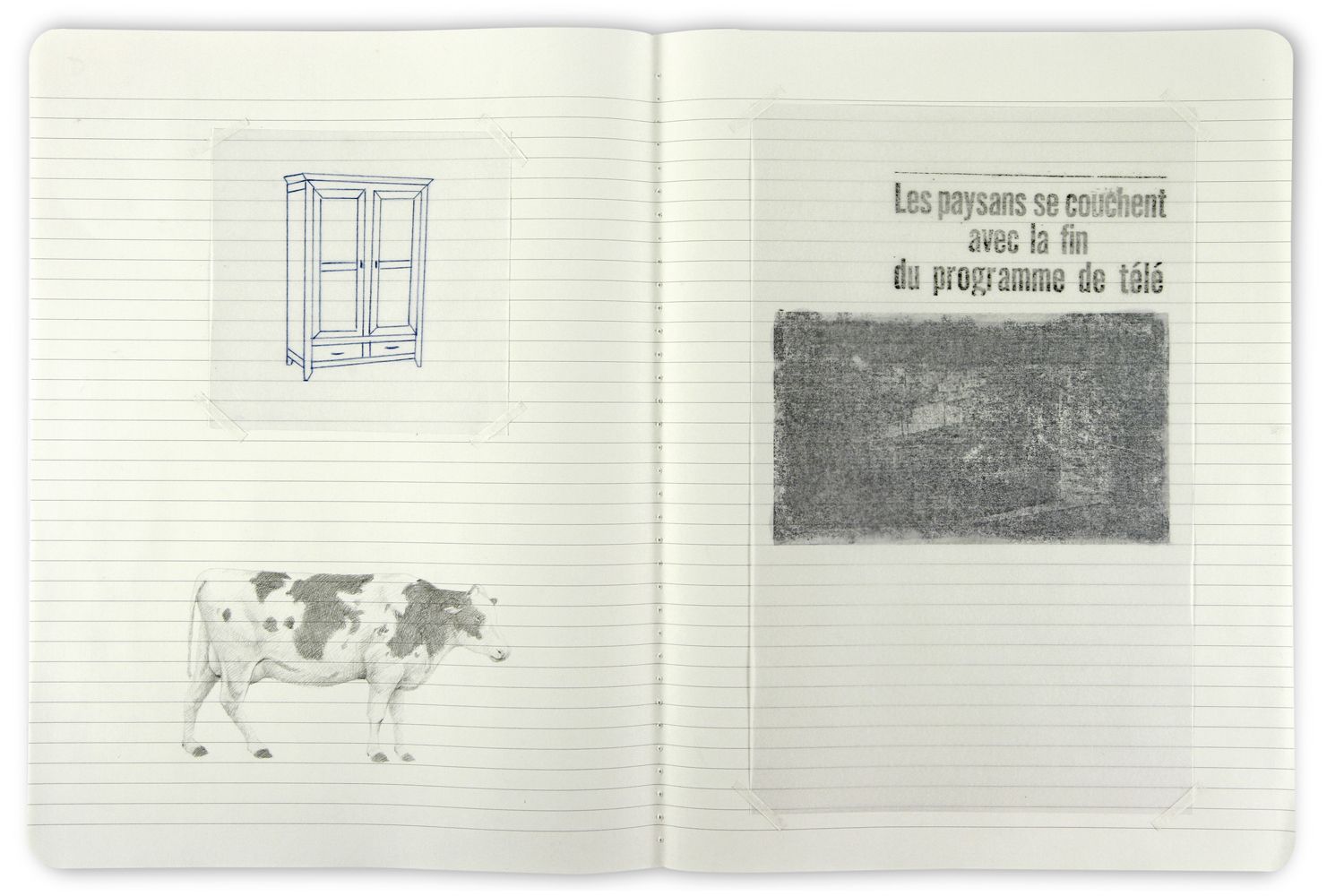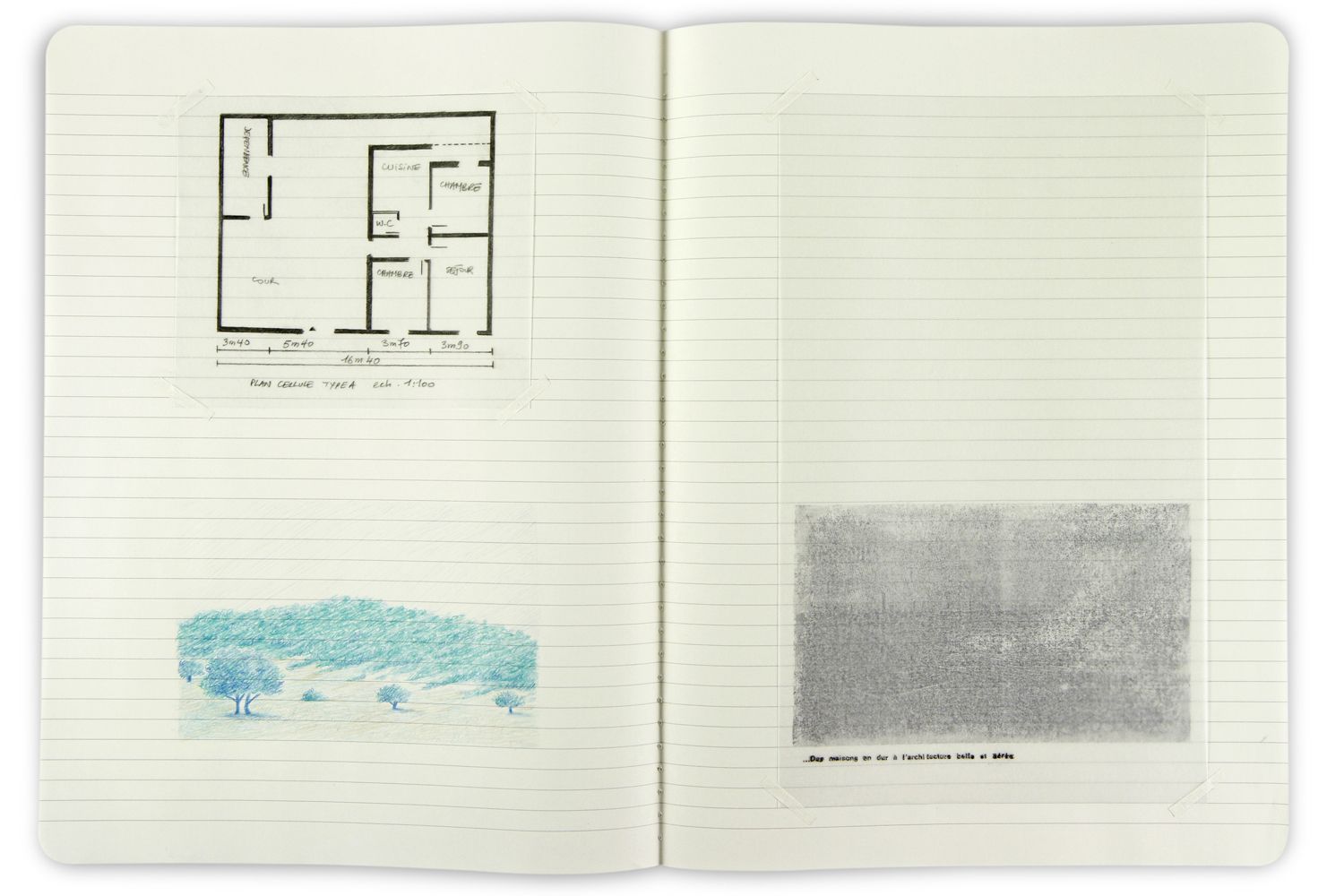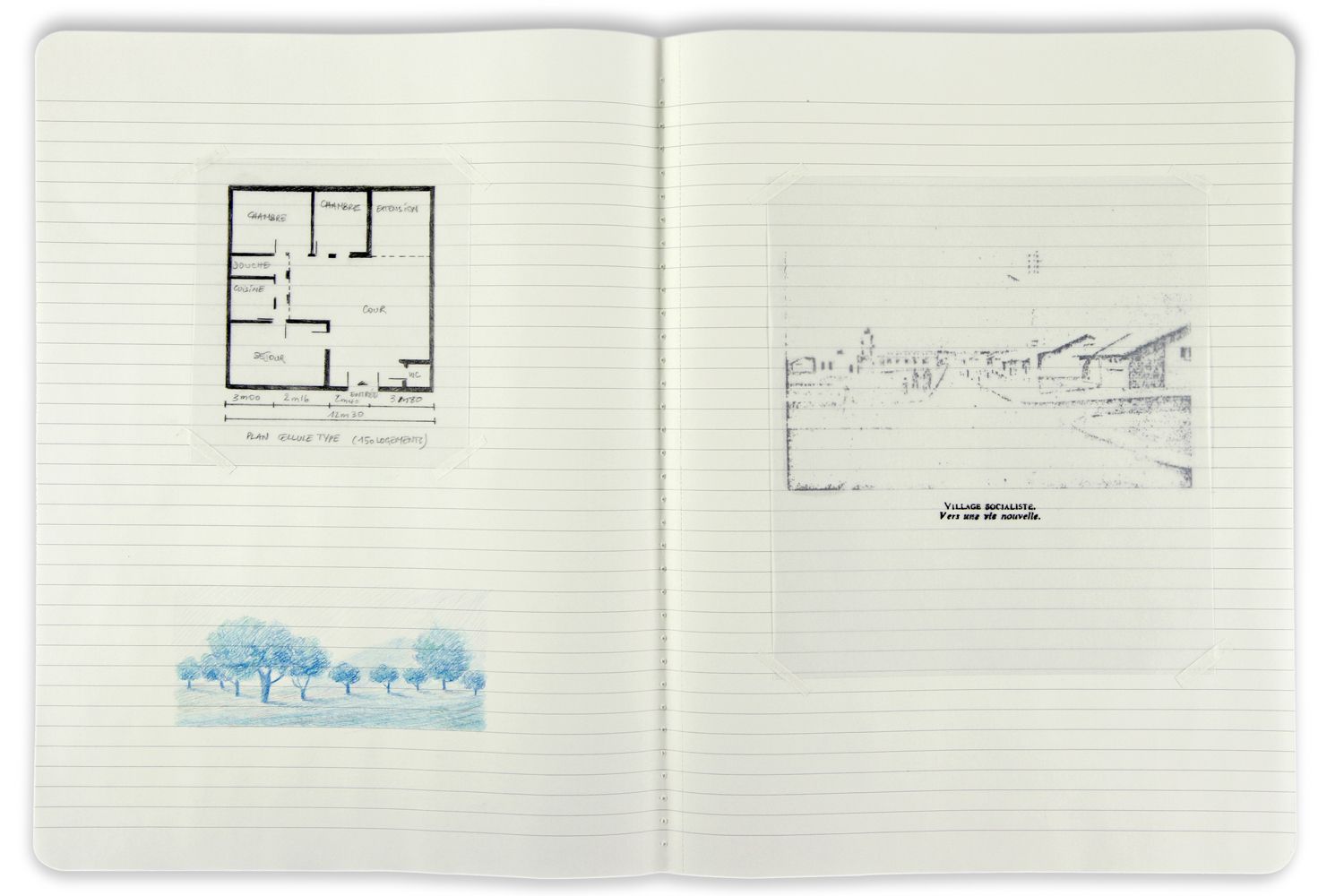1000 villages
Drawings on double pages and notebook cover.
Graphite, marker and transfer on paper and tracing paper.
With the support of the 56th Venise Biennale, All the world's futures, 2015.
Collection Frac Centre-Val de Loire, Orléans. France.
At the beginning of the 70's, the Algerian government launched a large public-works project known as the 1000 "socialist villages." The initiative aimed to relieve the rural population's isolation and poverty and to return land to them that had been taken away during colonization. This project also aimed to encourage the rural population to adopt modern agriculture techniques and to involve it in the Algerian socialist project via agriculture. Despite a laudable initial intention, the project could not be fully implemented because the implementation and construction of these villages, with few exceptions, often involved ideological or administrative considerations that imposed standards of production at the expense of the farmers' real needs. The population gradually lost interest in the project, which was terminated a few years later. This body of work is composed of twenty drawings on two-page spreads of notebook paper. They are arranged narratively as elements confronting each other: house plans, furniture drawn on tracing paper; drawings of spaces, agricultural land and animals. The images, reproduced using the transfer technique, are drawn from newspaper clippings from the 1970s. They are increasingly illegible as the series moves towards the collapse of this utopia. The last image is almost a ghost image. The only way to read these images in light of their context is by a caption printed on tracing paper, which restores the mental space of the original newspaper article. A drawing on the cover of a notebook is based on illustrations sold in the 70s-80s in Algeria that promoted the Algerian agrarian and industrial revolution.

Marker on notebook cover.

